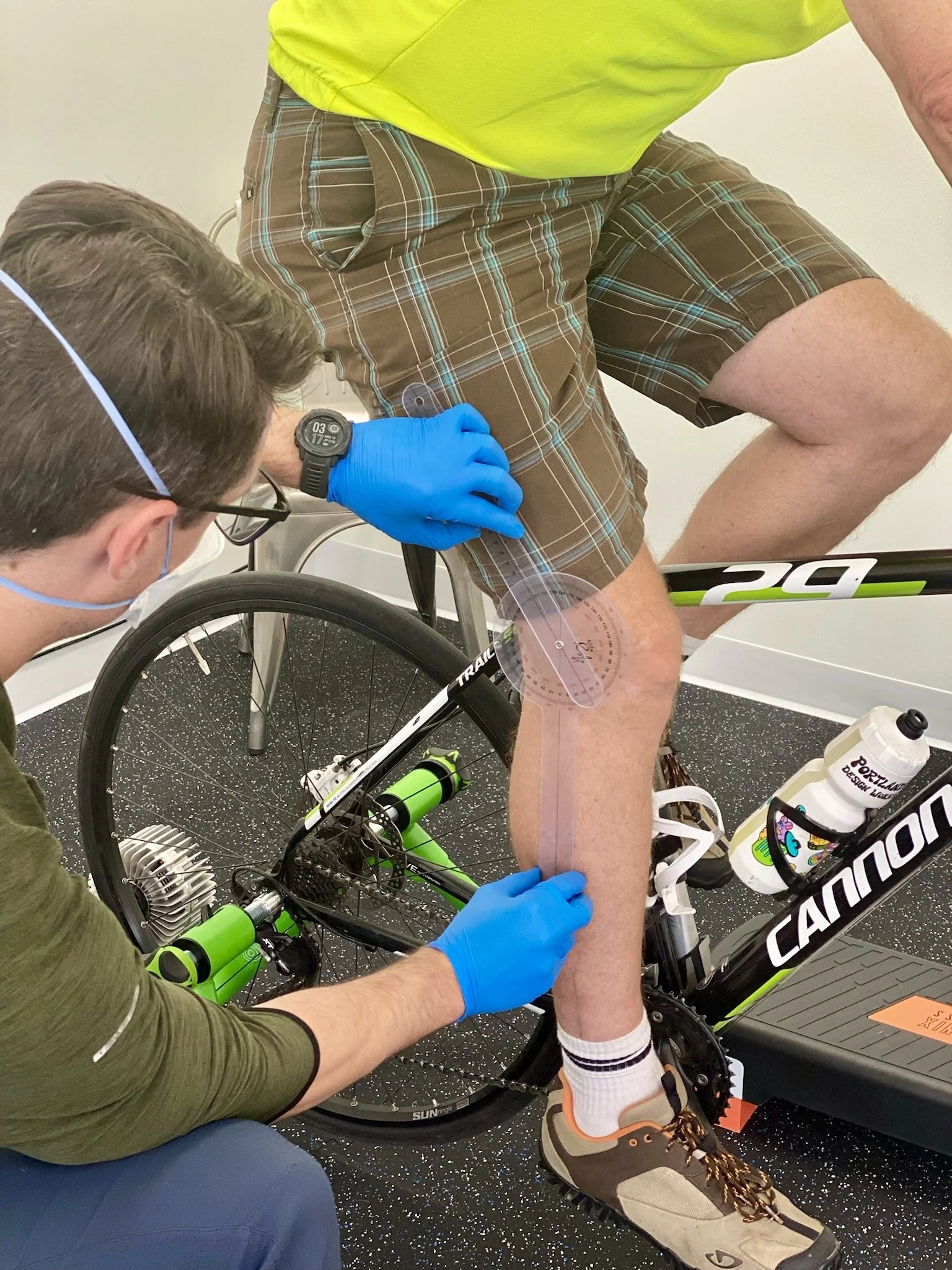Professional Bike Fitting
A proper bike fit is one of the most important investments you can make in your comfort, performance, and injury prevention as a cyclist. Even the smallest adjustment in seat height, handlebar reach, or cleat position can mean the difference between smooth, powerful rides and nagging pain.
Whether you’re a road cyclist, mountain biker, gravel rider, or commuter, a professional bike fit ensures your body and bike work together efficiently so you can ride longer, stronger, and without unnecessary discomfort.
Why a Bike Fit Matters
Injury prevention: Poor bike setup is one of the leading causes of cycling-related knee, back, and neck pain.
Improved performance: An optimized position lets you generate more power while using less energy.
Comfort & endurance: Reduce strain on joints and muscles so you can ride longer with less fatigue.
What’s Included in a Bike Fit
At Timber and Iron Physical Therapy, our bike fit process combines physical therapy knowledge with cycling expertise:
Detailed history of your riding goals and current concerns
Full evaluation of your flexibility, strength, and posture
Adjustments to saddle height, fore/aft position, handlebar reach, and cleat alignment
On-bike movement analysis to assess efficiency and comfort
Individualized recommendations for strength, mobility, and injury prevention
Who Benefits from a Bike Fit?
Riders dealing with pain during or after rides (knees, hips, back, or neck)
Cyclists recovering from injury and returning to training
Athletes looking to maximize performance and endurance
New bike owners who want to make sure their setup is right from day one
Invest in your ride, your performance, and your long-term health. Book your PROFESSIONAL BIKE FIT today.

